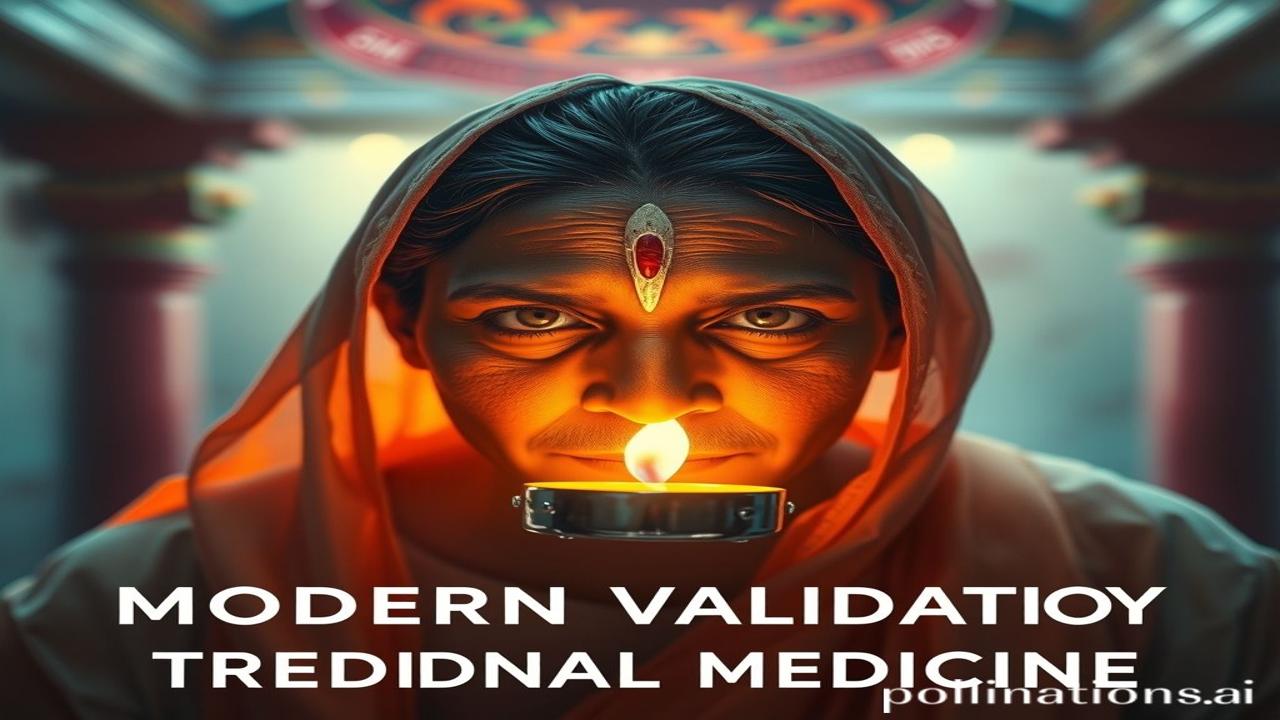Dadi Maa Ke Nuskhe: क्या मॉडर्न साइंस Ayurveda Ko Akhirkaar Maan Raha Hai?
Kabhi socha hai, jab hum bachpan mein bimar padte the, toh Dadi Maa ke nuskhe kitne aaramdayak lagte the? Woh haldi wala doodh, tulsi ki chai… aaj bhi unki yaad aati hai. Par kya yeh sirf nostalgia hai, ya phir un purane ilaajon mein sach mein koi दम (dum) hai? Modern science, jo kabhi इन (in) traditional practices ko शक की नज़र (shak ki nazar) se dekhta tha, kya woh dheere-dheere Ayurveda aur yog ki shakti ko maan raha hai? Aao, is rahasya ko thoda kholen.
Ayurveda: Ek Purani Vigyaan, Ek Nayi Pehchaan
Ayurveda, matlab “jeevan ka vigyaan” (science of life), koi aaj ka concept nahi hai. Yeh lagbhag 5000 saal purani parampara hai, jiski shuruwat Bharat mein hui thi. It’s not just about treating symptoms; it’s about understanding the whole person – mind, body, and spirit – and bringing them into balance. Charak Samhita aur Sushruta Samhita jaise granth, jo centuries pehle likhe gaye the, aaj bhi Ayurveda ke basic principles ko define karte hain.
Lekin, pichle kuch saalon mein, Ayurveda ko thoda marginalised feel hua, especially with the rise of allopathic medicine. Lekin, interestingly, jab modern medicine ke side effects aur limitations samne aane lage, toh logo ka dhyaan phir se is ancient wisdom ki taraf gaya.
Zamini Sach: Rishi, Vaidya, Aur Hum
Imagine a village scene, hundreds of years ago. Ek vaidya, jiske paas sirf herbs aur ancient texts the, bimariyon ka ilaaj karta hai. Woh sirf dawai nahi deta tha, woh patient ke lifestyle, diet, aur emotional state ko bhi samajhta tha. “Beta, tumhari प्रकृति (prakriti) kya hai? Kya tum पित्त (pitta) ho, वात (vata) ho, ya कफ (kapha)?” Woh aise sawal puchta tha, har insaan ko ek unique entity ki tarah treat karta tha.
Ma Rukmini ne apne poto (grandson) ko bataya tha, “Jab tujhe sardi lage, toh sirf cough syrup mat pi. Thoda adrak aur shahad bhi le. Yeh tere शरीर (shareer) ko andar se garam karega!” Yeh ek zamane ki baat hai, lekin aaj bhi woh words mere kaano mein gunjte hai.
Dharohar Aur Pehchan: Ayurveda Aaj Kal
Aaj kal, Ayurveda sirf village vaidyon tak seemit nahi hai. Universities mein iski padhai ho rahi hai, hospitals mein Ayurvedic treatments mil rahe hain, aur international level par bhi iski acceptance badh rahi hai. You can find Ayurvedic doctors, clinics, and products everywhere, from the local kirana store to high-end wellness retreats.
Yeh sirf ek trend nahi hai; it’s a revival of Bharatiya culture and a reassertion of our identity. Hum apni jadon se jud rahe hain, un wisdom ko maan rahe hain jo generations se chali aa rahi hain. Yoga aur Ayurveda dono hi ‘Make in India’ aur ‘Atmanirbhar Bharat’ ki spirit ko reflect karte hain – self-reliance aur proud ownership of our heritage.
Majedar Tathya Ya Bhram-Bhanjak: The Truth Behind the Hype
Log samajhte hain ki Ayurveda slow hai aur allopathy fast. Lekin asli sach yeh hai ki Ayurveda ka focus root cause par hota hai, not just quick fixes. Yes, it may take time, but it aims to heal the body from within and prevent future illness. Yeh ek marathon hai, sprint nahi.
Ek aur misconception hai ki Ayurveda sirf herbs par depend karta hai. While herbs are important, Ayurveda also emphasizes diet, lifestyle, yoga, meditation, and even astrology. It’s a holistic approach to health.
Drishya Aur Bhavnayein: Smelling the Earth, Feeling the Pulse
Imagine the smell of sandalwood incense in an Ayurvedic clinic, the sound of chanting in the background, the gentle touch of the vaidya feeling your pulse. The air feels calm, the walls are painted in earthy tones, and the overall atmosphere is healing.
You drink a cup of warm herbal tea, the taste slightly bitter but somehow soothing. You feel a sense of peace, a connection to something ancient and powerful. Yeh sirf dawai nahi hai, yeh ek anubhav hai.
Antim Vichar Ya Uddharan: The Journey Within
As modern science continues to explore the mysteries of the human body and the power of natural remedies, it is increasingly validating what traditional Indian medicine has known for centuries. Maybe Dadi Maa was right all along.
“सर्वे भवन्तु सुखिनः, सर्वे सन्तु निरामयाः” (Sarve bhavantu sukhinah, sarve santu niramayah) – May all be happy, may all be free from illness. This Sanskrit shloka perfectly embodies the spirit of Ayurveda – a wish for the well-being of all.
Toh, kya aap bhi apne andar ke vaidya ko jagaane ke liye taiyar hain?
